A Culinary Tour of India
A textile of different cultures, cuisines, styles, regional specialties woven into one – India has a cuisine that takes even the most timid to try a mix of flavors that range from spicy to sweet to spicy, and that’s all in one dish alone.
How can it be so that a country such as India, has quite a dance of flavors?
A mix of regional dishes, a coexistence of eating habits, restrictions and beliefs surrounding food? A religion that plays a major role in the food they eat, and that goes far beyond which worship edifice they attend.
Let’s explore this question a bit further, as we travel to India, and explore it through it’s cuisine, traditions, and food history in today’s post.
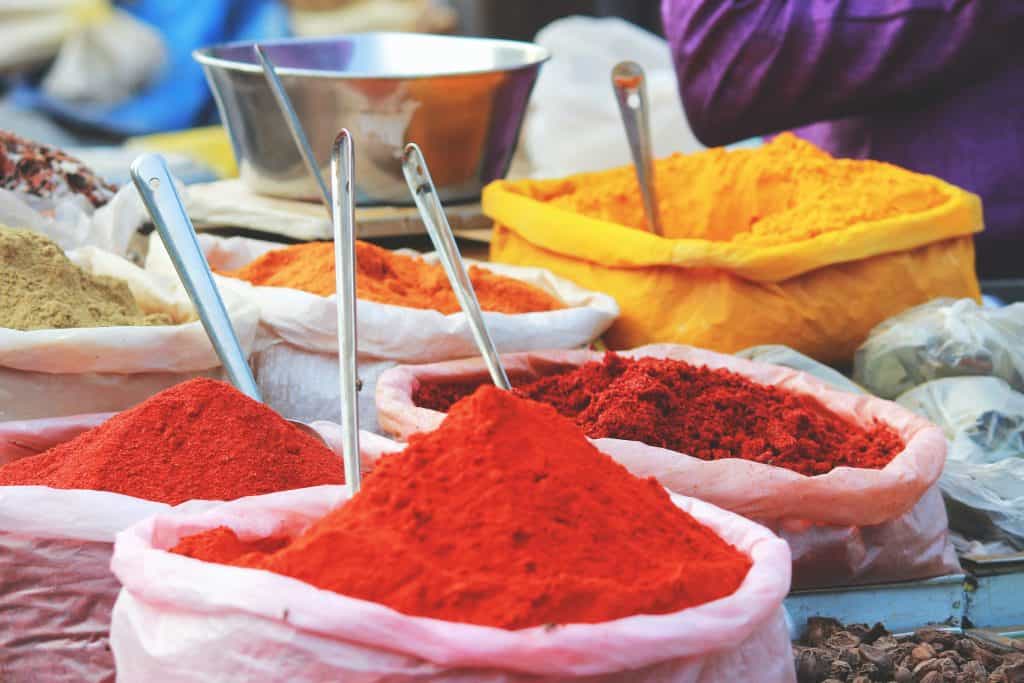
Lay of the land
India is a country that is surrounded by 3 bodies of water: the Bay of Bengal to the east, the Arabian Sea to the west, and the Indian Ocean to the south.
This already in itself provides a geographical influence on the cuisine, as eastern Indian cuisine is heavily influenced by the Bay of Bengal and the many rivers and tributaries starting in the Himalayas.
Moving towards the southern point of India, the people of the Hindu religion practice bathing themselves in the waters with the belief that the 3 bodies of water will wash away their sins.
Because of the natural landscape and weather throughout different parts of India, there is quite an abundance of fresh fruits, vegetables, fresh fish, and crops such as rice, which is a huge staple ingredient throughout India, for both consumption and tradition.
While we will continue to explore more on staple ingredients down below, it’s worth mentioning now that certain proteins such as fish and chicken are consumed, while others such as pork and cow are not for religious purposes.
This in itself shapes both customary eating patterns, as well as culinary staples that are regionally well known, that we will continue to discover down below.
Though a variety of religions definitely influence the eating patterns of the country and its people, there are populations of people that do consume pork dishes for example (not too common, but some do exist), and then there are others that do not consume animal products, and even a bit beyond.
For example the people of Jainism believe that animals and plants both have souls within, therefore they eat and live in a way that minimizes the impact on the world and other creatures.
Influences
When we think of Indian cuisine and other cultural influences (in multiple areas; political, cultural, gastronomical, etc.), we may think of the British who arrived in 1599, and to this day have an influence that goes both ways between both cultures and food.
Their cultural mergence gave way for dishes such as chicken jalfrezi which is a dish that was created from leftover meats used in Sunday roasts, stir fried with other spices.
Additionally, the Brits brought over cabbage, and began integrating that into Indian cooking as well.
Curry was a term coined by the British as an umbrella term for all the different sauce variations with meats – curry became a name to describe any and all dishes with these two components.
However the Portuguese are said to have been the first Europeans to have set foot on Indian territory in 1498, in which they colonized three coastal areas, Goa being one of the most popular ones.
With them, they brought a slew of new ingredients, many being cashew nuts, chiles, peppers and tomatoes (most likely brought over from South America).
Vindaloo is Goa’s most popular dish, and it has Portuguese origins. In dissecting the name of the dish, it means vin-vinegar, aloo(alho)-garlic.
India has experienced many influences beginning with the Mughals, which are the group of people that had the most impact on what modern Indian cuisine is, as they are the ones who introduced different cooking styles such as korma which is a meat and gravy sauce dish, and
Biryani, which is a fragrant rice dish with a type of sauce and a type of meat. Other popular dishes include tandoori chicken, chicken tikka, and spicy kebabs.
Shortly after, little by little, the French, Syrians, Jews, Persians arrived, also adding their touch to Indian cuisine such as sweet and sour flavors, and abundance of rice, spicy flavors, and lamb.

National dishes
To name all of the dishes that put India on the culinary map would be difficult, as there are so many dishes pertaining to different parts of the country. India truly is brimming with so much variation, specialty, and ingredients, so let’s break it down region by region.
North
Because of the very hot summers and cold winters, northern India has an abundance of fresh seasonal fruit and vegetables.
Because of the cultural and cooking influence of the Maghals, rice dishes such as pilafs and biryanis are very prevalent in this region.
Parathas (flaky Indian bread with different vegetarian and non-vegetarian fillings) are a common food item here, as well as kulchas (bread made from fermented dough).
As far as desserts, most items are made from milk, paneer (non-melting, soft cheese) lentil flour, and wheat flour combined with dried nuts.
Items such as chappatis, paratha, and pooris are unleavened flatbreads that are often consumed in this region as well.
Staple ingredients here include dairy, fruits, vegetables, rice, dried fruit, nuts, meats such as lamb.
West
Home to some of the most beautiful beaches, Bollywood, a major Portuguese influence, and one of the wealthiest states, this arid region of India uses rice as a major staple ingredient and the star in many dishes with fresh vegetables.
As a result of its proximity to the sea, they cook a lot with fish, prawn, shellfish, lobster, and coconut, especially adding grated coconut to food dishes.
Other staple ingredients include tamarind, eggplant, and lentils. Some of the main dishes found here are Pomfret, which is a fish that is barbecued stuffed, fried, or curried.
Pamphlet triphal ambat is another traditional dish of the region consisting of fish cooked in creamy coconut gravy type of sauce.
Eggplant is an ingredient widely used in this region and cooked in a variety of dishes such as pachadi, which is eggplant cooked with green mangoes and flavored with coconut and jaggery (a type of cane sugar).
South
Southern Indian is overflowing with an abundance of fresh vegetables, fruits, seafood, and a whole lot of rice due to its very hot summers and overall very fertile soil.
Rice is a very big staple here (as with the rest of India) however, rice in southern India is seen as more than just a food ingredient.
Rice here takes on a religious role (as does other activities and items in this region), as rice is used for worship and the representation of health, wealth, and fertility.
Moreover, rice is such a staple ingredient in this region, that it is pretty much consumed in all meals, sometimes as a 3-course meal, and in a variety of ways with sauces and gravies and meats, and for breakfast as well.
A sample 3 course rice meal looks like the following: rice with a mix of mung beans, or lentils simmered in a pot until creamy, with rice, called sambhar.
The second course looks like a spicier and flavorful mix of rice mixed with tomato-based soup with lentils and a dose of spicy tamarind, in a dish called rasam.
Lastly, the third course consists of rice and buttermilk or yogurt served with either a non-spicy medley of vegetable dishes in a stew or saute form. Lastly, coconut is used for flavoring as well as for its water.
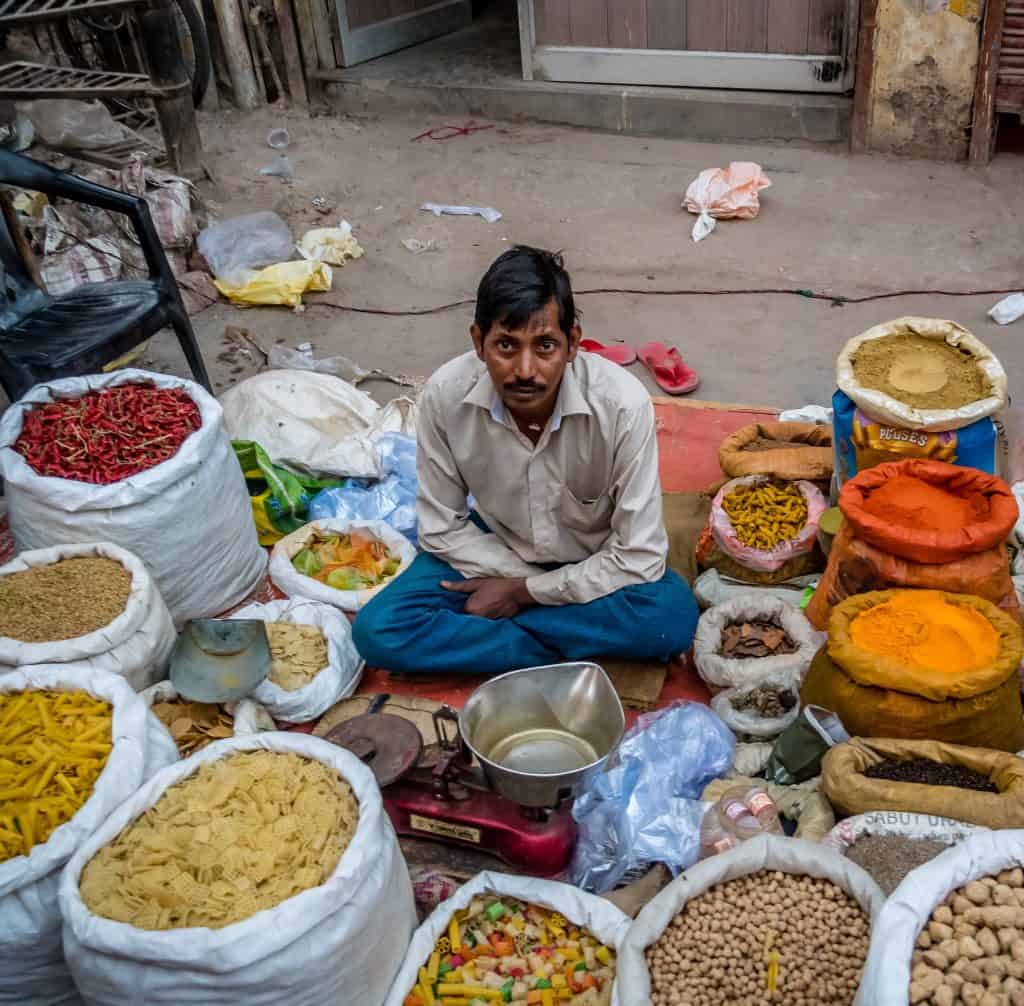
Recipe
(Taken from the recipe book The International Culinary Schools International Cuisine)
Gobhi Padkode (Cauliflower Fritters)
3 cups of cauliflower florets
1 cup besan (chickpea flour like this)
1 tablespoon cilantro (coriander), ground
1 teaspoon tumeric
1/4 teaspoon black pepper
1/8 teaspoon cayenne pepper
1 teaspoon salt
1 tablespoon vegetable oil
3/4 cup cold water
Oil for frying (as needed)
Directions
- Parboil cauliflower, keeping firm. Transfer to ice water and drain.
- Mix remaining dry ingredients; add water until a smooth nape consistency (coats the back of a spoon) is formed.
- Let batter stand 30 minutes.
- Heat frying oil to 375 degrees Fahrenheit (190 Celsius).
- Coat cauliflower florets in batter; fry until golden brown. Drain on paper towels.
- Serve hot or warm.
Chai Masala (spiced tea)
1 cup milk
2 cups water
3 cardamom pods (like these)
2 cloves
1/2 stick cinnamon
1/4 teaspoon fennel seed
Sugar (to taste)
4 orange pekoe teabags (like these)
Directions
- Combine milk and water and bring to a boil. Stir in the spices and sugar to taste.
- Turn off the heat, cover and let the spices steep 10 minutes.
- Add the tea bags. Bring back to a boil, then turn off the heat and steep 3 minutes.
- Strain and serve piping hot.
India is a land of richness in a variety of ways that cannot be entirely covered in a blog post, but after this literary tour of food, ingredients, spices, and history, I hope this post has inspired you as it has for me to visit this abundant land. At the very least, try local Indian restaurants near you 🙂 What’s your favorite Indian dish? Have you ever tried it? Will you?
To more recipe stories, food enchantment, and endless curiosity and hunger ✨
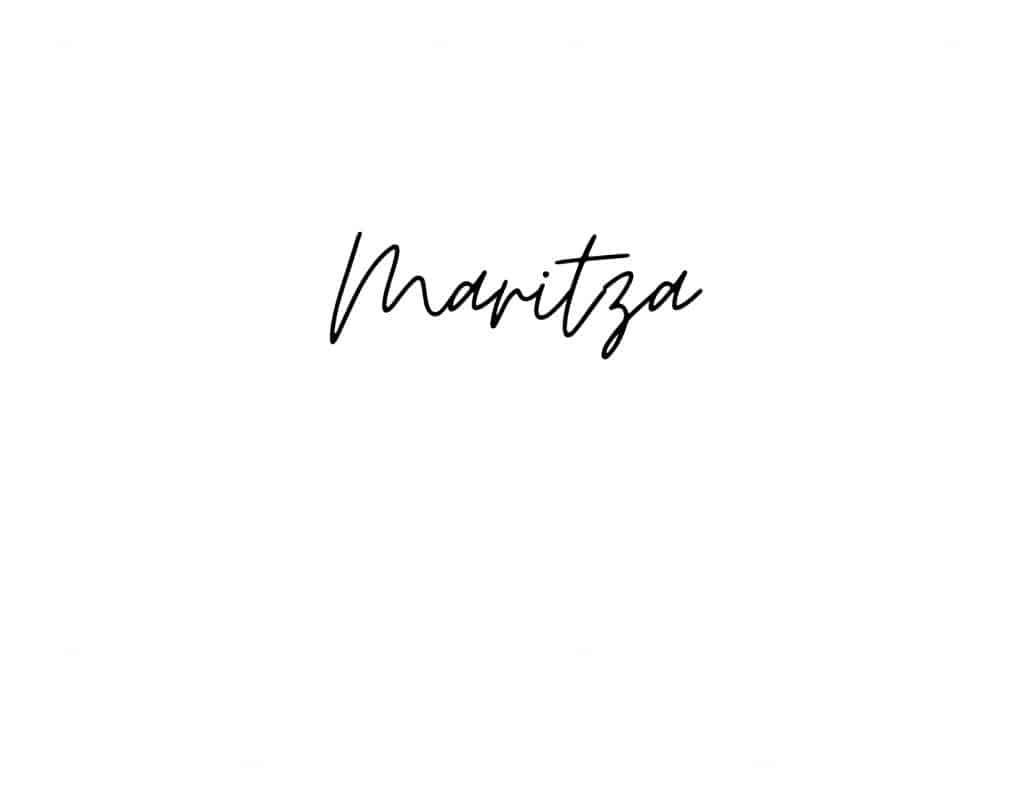
P.S. – If you’re looking for a cookbook with a broad range of international dishes and recipes, along with a bit of culinary insight – I recommend this book for you. This was the book that I used during culinary school and is one of my favorites to use to this day.
Like it? Pin it!


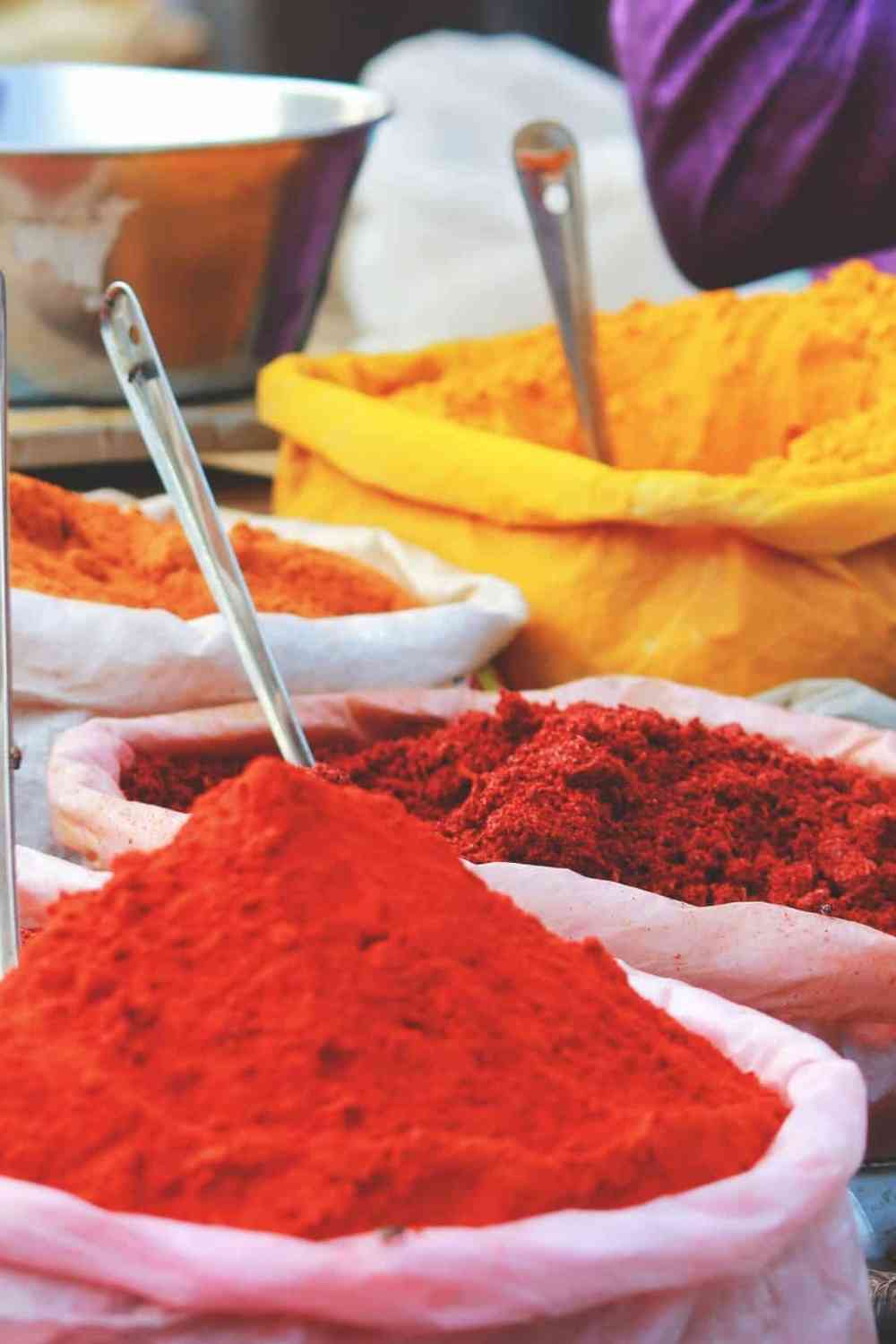

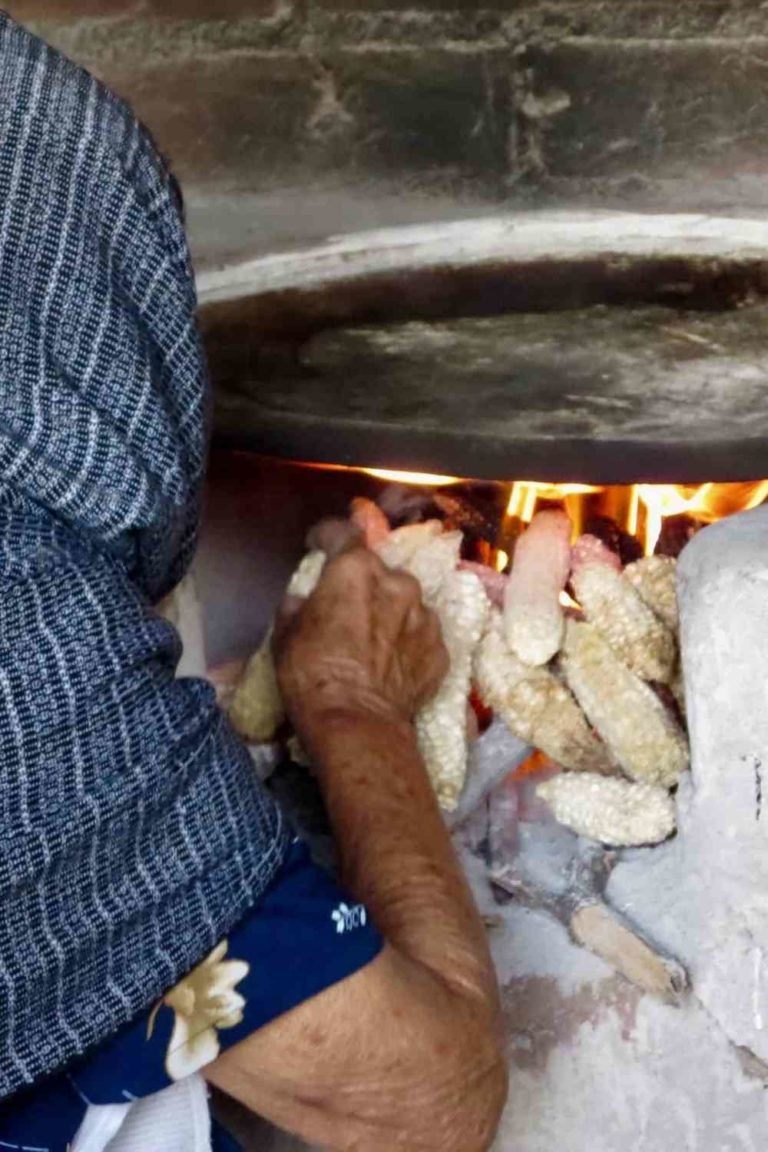


![10 Must-Read Travel Books You Need On Your Bookshelf [Updated 2024]](https://www.travelnotesandthings.com/wp-content/uploads/2020/05/10-Must-Read-Travel-Books-You-Need-On-Your-Bookshelf--768x1152.jpg)
